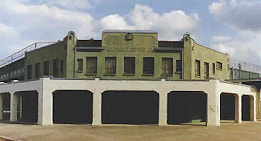 Dedicated in 1910, Rickwood Field serves as the home of the Birmingham Barons of the Southern League and the Birmingham Black Barons of the Negro American League.
Dedicated in 1910, Rickwood Field serves as the home of the Birmingham Barons of the Southern League and the Birmingham Black Barons of the Negro American League. (Photograph by Robin McDonald)
On August 18, 1910, Birmingham looked like a deserted city. All business had closed down, as had many stores in Bessemer and Ensley. It was "Baseball Day," and everyone in town who had the price of a ticket had gone to the grand opening of Rickwood Field. "There has never been such a day in Birmingham or in any other city of the Southern league," wrote one excited newspaper reporter. Sixty additional street cars had been put in service to aid in moving the anticipated crowd of as many as ten thousand people.
 RSS Feed
RSS Feed